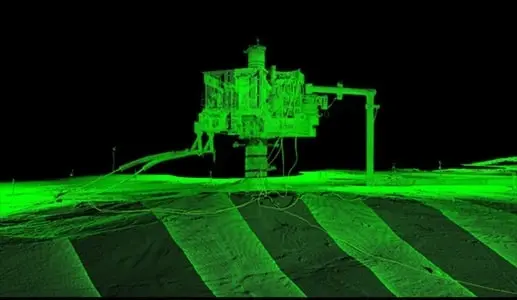In the ever-evolving landscape of the oil and gas industry, technology plays a pivotal role in enhancing exploration and mapping processes. One such technological marvel that has gained significant attention is LiDAR technology. LiDAR, which stands for Light Detection and Ranging, has transcended its origins in remote sensing to become an indispensable tool for various industries, including forestry, agriculture, and urban planning. This article explores the profound impact of LiDAR technology on oil exploration and mapping, shedding light on its principles, historical development, real-world applications, challenges, and future prospects. Visit oil-profits.com if you are looking for a reliable and trusted trading platform.
Understanding LiDAR Technology

What is LiDAR?
LiDAR is a remote sensing technology that employs laser pulses to measure distances and generate detailed three-dimensional maps of the Earth’s surface. The fundamental principle behind LiDAR is the emission of laser beams towards a target area, with the time taken for the reflected light to return used to calculate distances accurately. The result is a point cloud dataset that can be transformed into intricate topographical maps or 3D models.
Principles of LiDAR
LiDAR systems consist of three essential components: a laser scanner, a GPS receiver, and an inertial measurement unit (IMU). The laser scanner emits rapid laser pulses, while the GPS receiver and IMU collect location and orientation data, respectively. Combining these components allows LiDAR technology to create precise and high-resolution maps.
Types of LiDAR systems
LiDAR technology can be categorized into various types, each tailored to specific applications. These include Airborne LiDAR, Terrestrial LiDAR, and Mobile LiDAR systems, with each type offering unique advantages and use cases.
Historical Development and Evolution of LiDAR
The roots of LiDAR technology can be traced back to the early 1960s when researchers began exploring the possibilities of using lasers for remote sensing applications. The term “LiDAR” was coined as an acronym for “Light Detection and Ranging” in 1963. The initial applications were primarily in the fields of meteorology and atmospheric research.
Over the years, LiDAR technology has evolved significantly. Early LiDAR systems were large, cumbersome, and expensive, limiting their accessibility and practicality. However, advances in laser technology, GPS, and data processing have led to more compact, affordable, and efficient LiDAR systems.
Also See: Selecting the Optimal Oil Trading Approach for Novices
Advantages and Limitations of LiDAR Technology
LiDAR technology offers a plethora of advantages that have made it a preferred choice in various industries, including oil and gas:
- High Precision: LiDAR can capture highly accurate spatial data with sub-centimeter precision, making it ideal for applications where precision is crucial.
- Versatility: LiDAR can be used in a wide range of environmental conditions, including day or night, and is unaffected by weather conditions such as rain or fog.
- Efficiency: LiDAR systems can quickly collect vast amounts of data, covering large areas in a relatively short time.
- Non-Invasive: LiDAR does not require physical contact with the target area, minimizing environmental disruption.
However, LiDAR technology also has limitations:
- Cost: Acquiring and operating LiDAR systems can be expensive, limiting its accessibility to smaller organizations.
- Data Processing: Handling and processing the vast amount of data generated by LiDAR can be complex and time-consuming.
- Limited Penetration: LiDAR cannot penetrate dense vegetation or other obstacles, which can limit its applications in certain environments.
In the context of oil exploration and mapping, the advantages of LiDAR often outweigh its limitations, as its precision and versatility are well-suited to the industry’s needs.
LiDAR in Oil Exploration
The Role of LiDAR in Locating Potential Oil Reserves
LiDAR for Geological and Topographical Analysis
LiDAR technology excels in providing detailed topographical information, which is invaluable in identifying potential oil reserves. By generating high-resolution elevation models, LiDAR helps geologists and geophysicists analyze the landscape, identifying geological features that may indicate the presence of oil deposits. This includes fault lines, anticlines, and other subsurface structures that are associated with oil-bearing formations.
Identifying Subsurface Structures with LiDAR
While LiDAR primarily captures data from the Earth’s surface, advanced techniques can be employed to infer subsurface structures. By analyzing the topographical data collected by LiDAR and combining it with other geological data, researchers can create 3D models that provide insights into the subsurface structure of an area. This can aid in pinpointing potential oil reservoirs and optimizing drilling locations.
Case Studies of Successful Oil Discoveries Using LiDAR
Several oil exploration projects have harnessed the power of LiDAR technology to make significant discoveries. These case studies highlight the practical applications of LiDAR in the industry and demonstrate its contribution to locating oil reserves.
LiDAR in Oil Pipeline Monitoring
Monitoring the Integrity of Oil Pipelines with LiDAR
The safe and efficient transport of oil relies on the integrity of pipelines. LiDAR technology plays a crucial role in pipeline monitoring by providing continuous and comprehensive data.
Detection of Leaks and Corrosion
LiDAR-equipped drones or vehicles can perform routine inspections of pipelines. These inspections can identify issues such as leaks, corrosion, or structural damage. The high-resolution imagery and 3D models generated by LiDAR help operators detect and address potential problems before they escalate.
Identifying Ground Subsidence
Pipelines can be vulnerable to ground subsidence, which can lead to damage or ruptures. LiDAR can monitor ground stability by detecting even subtle changes in elevation. Early detection of ground subsidence allows for proactive measures to protect pipelines.
Real-time Data Analysis and Reporting
LiDAR data can be processed in real-time or near-real-time, providing pipeline operators with instant insights into the condition of their infrastructure. Automated algorithms can flag potential issues, reducing the risk of accidents and environmental disasters.
LiDAR for Environmental Impact Assessment
Minimizing Ecological Disruption in Oil Exploration
Oil exploration and drilling can have significant ecological impacts. LiDAR technology can help mitigate these effects by providing detailed information about the environment.
Aerial LiDAR for Habitat Mapping
Aerial LiDAR surveys can create precise habitat maps, allowing oil companies to identify and protect sensitive ecosystems. This information can inform decisions about where to conduct exploration activities while minimizing disruption to wildlife and plant life.
Monitoring Vegetation Changes with LiDAR
Oil exploration often involves land clearing and deforestation. LiDAR can monitor changes in vegetation cover over time, enabling companies to track the environmental impact of their operations and take steps to restore or mitigate the damage.
Regulatory Compliance and Sustainable Practices
LiDAR data can be used to demonstrate compliance with environmental regulations and best practices. By employing LiDAR in environmental impact assessments, oil companies can show their commitment to responsible and sustainable exploration.
Challenges and Future Developments
Current Challenges in LiDAR Technology for Oil Exploration
Despite its many advantages, LiDAR technology faces several challenges in the context of oil exploration:
- Cost Considerations: The initial investment in LiDAR equipment and data processing can be substantial, especially for smaller exploration companies.
- Data Processing Complexities: Handling and interpreting LiDAR data require specialized expertise and can be time-consuming.
Emerging Trends and Advancements in LiDAR
- Improved LiDAR Sensors and Data Processing Algorithms: Ongoing research and development efforts are focused on making LiDAR systems more affordable and user-friendly while enhancing data processing capabilities.
- Integration with Other Technologies: LiDAR is increasingly integrated with artificial intelligence (AI), the Internet of Things (IoT), and other cutting-edge technologies. This integration enhances data analysis, automation, and decision-making processes.
Conclusion
In conclusion, the advent of LiDAR technology has catalyzed a profound transformation within the oil and gas industry, fundamentally altering the landscape of exploration and mapping endeavors. This technology, characterized by its remarkable precision and adaptability, has become an indispensable asset for oil companies, offering invaluable insights into the environment. As the capabilities of LiDAR continue to advance, its role in the realm of oil exploration is poised for further expansion, ultimately fostering the development of environmentally sustainable practices. The trajectory of oil exploration and mapping now traces a promising path paved by the ethereal echoes, charting a course toward heightened efficiency and conscientious stewardship of our planet’s resources within the energy sector.














